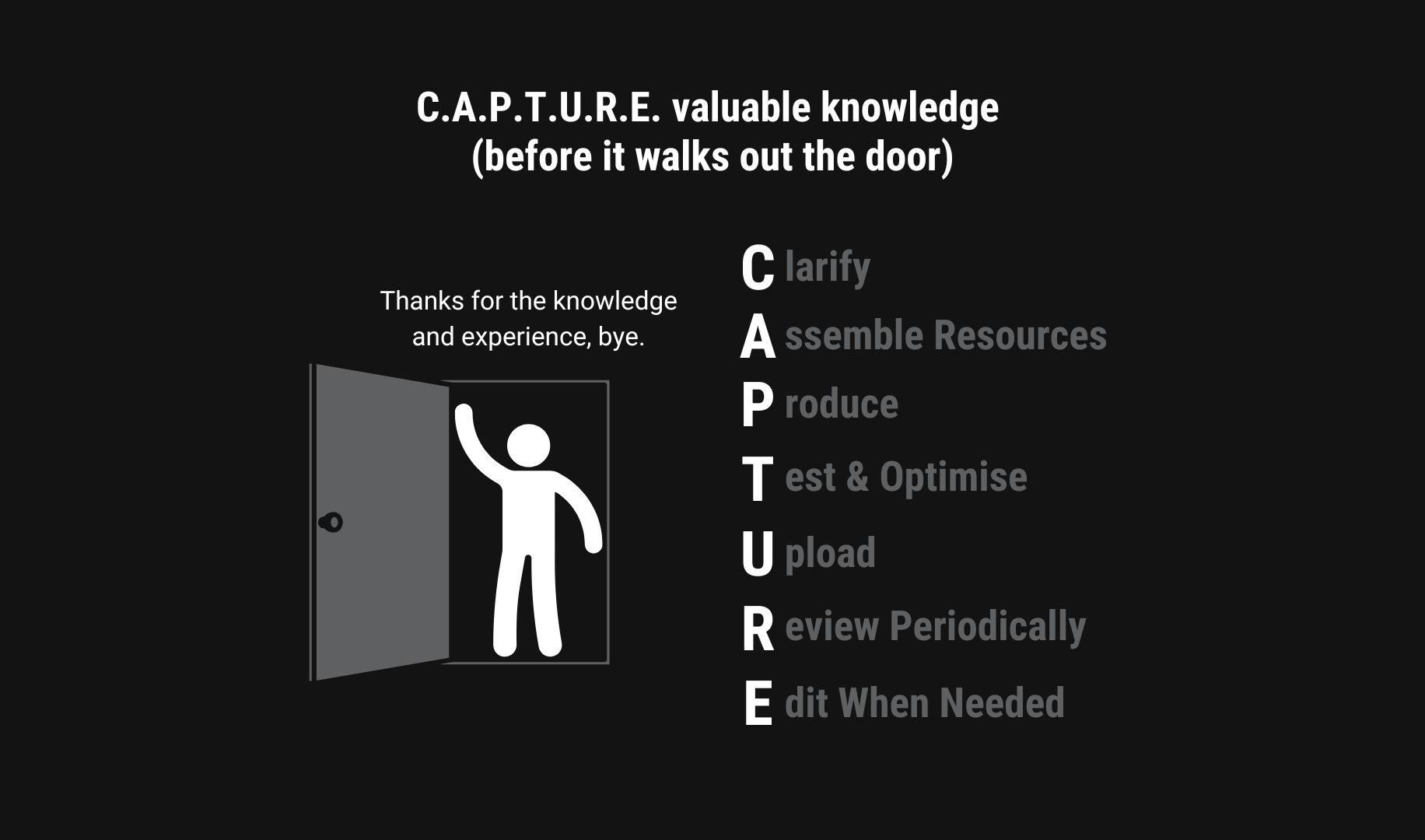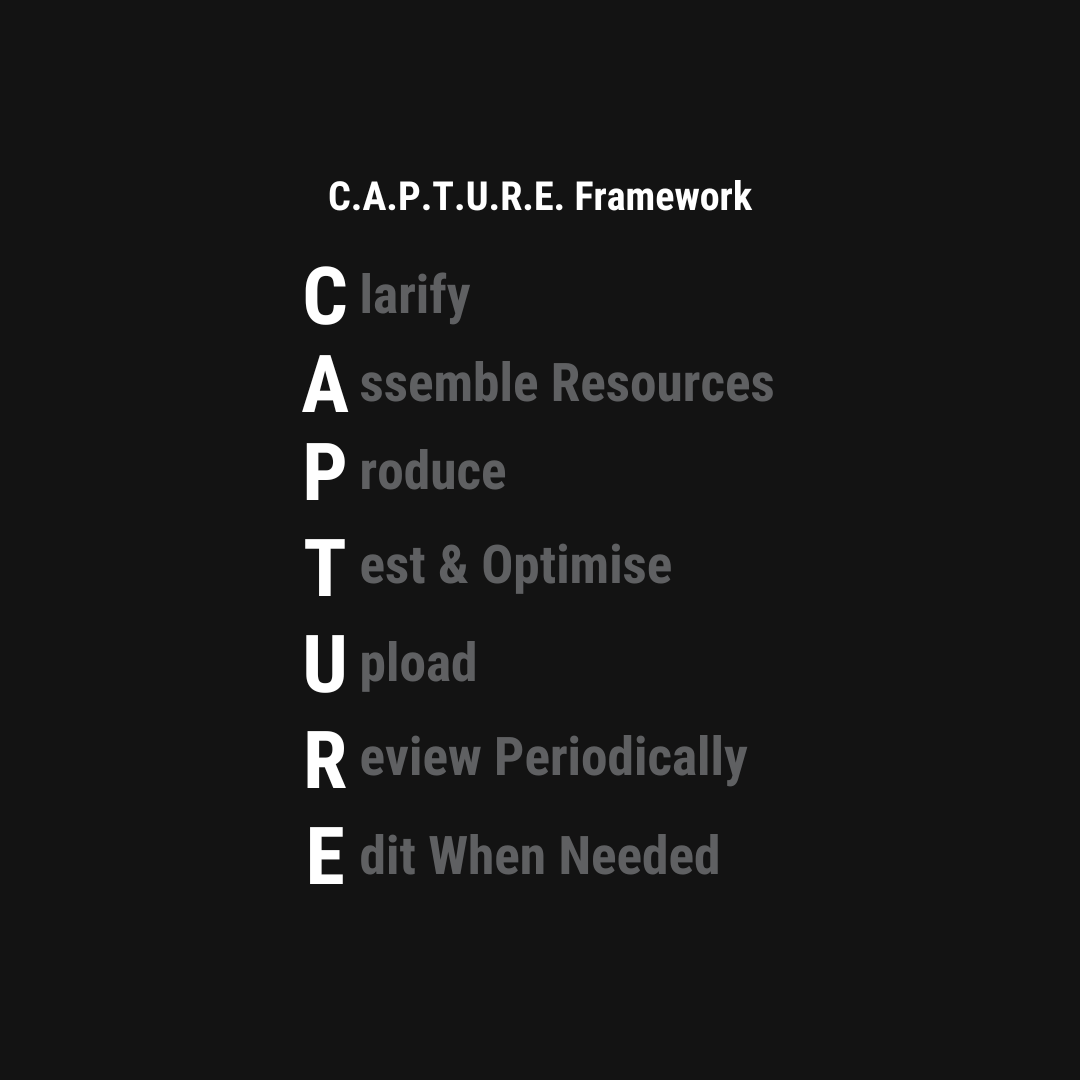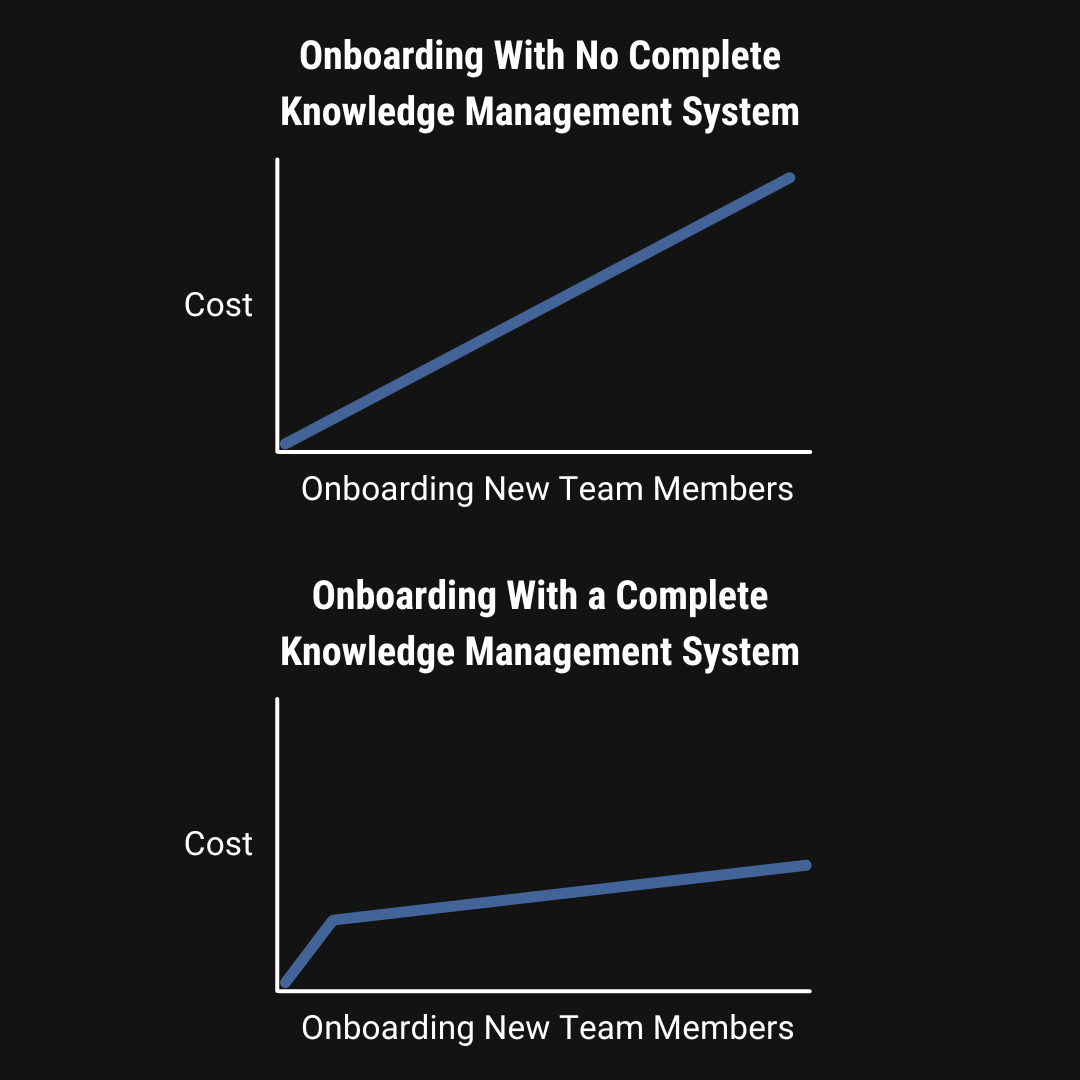A Framework to Capture Knowledge Before it Walks Out The Door

Over the last few years as a self-employed engineer, I’ve worked with 10 technical businesses.
I helped these businesses with technical services. Like design, engineering, quoting materials and project management. Most of the time on a project basis or on a retainer.
If you switch this many times between businesses, you start to notice patterns.
One of the patterns I noticed is that companies rarely document in detail how they do things. This makes onboarding really challenging and slow.
On my first day helping them I would ask questions like:
- "Is it documented somewhere how you would like certain things done?"
- "Do you have duplicatable templates to speed up processes?"
- "Who's the best person to learn this from?"
They often can not provide me with the resources to get me started fast. They:
- Point at a pile of papers and say “You can have a look in there how we did things in the past.”
- Spend hours digging through old files or email chains to find helpful information
- Say "Just ask [name], he knows everything about that" but [name] is on holiday or busy.
So to figure out how the business operates, someone who is available at that moment has to explain pretty much everything. This means I keep them from doing their own tasks for a while. All highly inefficient and expensive.
Most company and industry knowledge is not documented. Or is documented partly but not in an organised way. It often lives in people's heads. This is highly risky for a business.
- Someone can retire
- Someone can move away and quit
- Someone can get poached by your competitor and quit
- Someone can start another business in the same industry and quit
- Someone can get in a life changing accident can cannot execute the work anymore
In all cases, valuable company and industry knowledge is gone. I’ve seen all the scenarios.
A key team member leaving the business must be one of the most costly and painful events in a business.
The impact on a business can actually be devastating. It affects not only the finances but also client relationships. Here are some of the main costs involved:
- The cost of all the time and resources invested in training the leaving team member
- The cost and time required to find, hire and train a replacement
- Lost revenue from clients who leave due to relationship changes or service disruptions
- Lost productivity during the transition period
- Knowledge gaps that can lead to costly rework
These costs can easily add up to tens or even hundreds of thousands of dollars.
Not to mention the stress and extra work for the remaining team members who have to pick up the slack. All while trying to keep the business running smoothly.
C.A.P.T.U.R.E. Valuable Knowledge
We can't prevent key team members from leaving, but we can make sure all their expertise doesn't walk out the door with them.
I’m convinced every business needs a structured knowledge capture system. Combined with a central knowledge management platform to transfer that knowledge.
Think of it as creating a digital brain for your business. A place that stores, organises and makes information easily accessible to everyone who needs it.
This doesn't mean you'll never feel the impact when an experienced team member leaves. But it does mean you won't have to start always from scratch and spend days of your own time teaching.
New team members can get up to speed faster and you + existing team members can access the information needed. All without hunting through old email chains or relying on someone's memory.
I've developed a framework based on my experience working with various technical businesses.
I call it the C.A.P.T.U.R.E. Framework.

A framework designed to capture valuable company and industry knowledge. Ready to share within your organisation while keeping it up-to-date.
Let's break down each element of the C.A.P.T.U.R.E. framework and how you can install it in your business.
Clarify
Get clear on the goal, audience and format for the knowledge you're capturing:
- Identify the key knowledge to capture: Technical process or step-by-step guide?
- Clarify who the target audience is: New hire, existing team member or client?
- Define the end goal: Is it for internal use, client education or training purposes?
- Decide on the format: Will this be a video, SOP, checklist or a combination?
These steps help you decide what knowledge to capture and how to do it.
Assemble Resources
Gather all the necessary materials, information and tools required to capture the knowledge:
- Collect existing materials: Manuals, articles, diagrams or past project documentation.
- Gather visual assets: Images, drawings, screenshots or relevant videos.
- Interview experienced workers: Capture undocumented knowledge.
- Set up the required digital tools: Notion, ClickUp, Scribe or screen recording software.
These steps help you prepare the information and resources needed before creating the knowledge asset.
Produce
Create the content in the chosen format. Make sure it is clear, without fluff and actionable:
- Create an outline: Break down processes into clear, manageable steps.
- Design and create written content: Write a full script or SOP and design visuals or slides.
- Capture or record footage: Use available phone, camera or computer equipment.
- Edit content: Create a presentable and professional final version.
These steps help you create a well-structured piece of content that others can understand and follow.
Test & Optimise
Make sure the content is accurate, easy to follow and optimised for efficiency:
- Find a first-time user: Give the knowledge asset to someone who is unfamiliar with the process.
- Follow the instructions: Let them follow the documented process.
- Gather feedback: Did they get stuck? Was something not clear?
- Optimise the content: Improve the knowledge asset based on this feedback.
These steps make sure your knowledge asset works in practice and is useful for the target audience.
Upload
Store the finalised content in a centralised, accessible location:
- Upload the content to a shared platform: Like Notion, ClickUp or a cloud storage solution.
- Organise the content: Use tags, categories and folders for easy searching.
- Include links: Use links that lead to helpful websites, apps or files.
- Set appropriate permissions: Make sure the right people can access and update the content.
These steps ensure your knowledge is accessible and organised in one central place, making it easy to find.
Review Periodically
Review the information periodically to make sure it remains up-to-date:
- Set review intervals: Quarterly or annually depending on how often the process changes.
- Assign responsibility: Choose someone who understands both the content and the process.
- Compare the current content to the latest process: Is anything outdated?
- Note down when an asset is checked: Add a note with date and findings when reviewing.
These steps help you both give refresher lessons and spot any outdated information before it causes problems.
Edit When Needed
Make updates and improvements to the content whenever necessary:
- Gather feedback: Collect input from users about potential improvements.
- Update content: Make changes to the knowledge asset.
- Version control: Track changes and when they were made.
- Communicate updates: Notify relevant team members when important changes are made.
These steps help you keep your knowledge assets up-to-date.
You might think "This is quite a lot to take in" and you're right. How to actually capture knowledge in different ways (like videos, SOPs or checklists) is a topic for another article.
But just being aware of this structure is hopefully already helpful. It gives you a clear path to follow when you need to document something important and keep it up-to-date. Instead of feeling overwhelmed about where to start, you can simply follow these steps.
The Knowledge Management Platform
Where you save and organise the knowledge assets is just as important as creating them.
Most businesses store their knowledge assets as scattered files. Somewhere across cloud services like Dropbox or OneDrive. Using cloud storage works alright. But a dedicated knowledge management software like Notion or ClickUp definitely works best. Some of the big benefits are:
- You can control exactly who can see and edit the different assets
- You can customize and reorganise the structure of any knowledge asset
- You can turn the document in Notion or ClickUp into a shareable website
- You can add labels to the knowledge asset which makes knowledge easier to find
- You can have videos in the same document as the text. Unlike Word or Google Docs
All super handy.
If you're wondering if Notion or ClickUp would suit your business, feel free to reach out and I'll help you decide if one of them fits your operation.
The Investment
Let's go through a scenario by breaking down the costs of knowledge management in a technical business with 20-50 employees. Please note that these are estimates, so don't focus too much on exact numbers but try to get the main point.
The Cost of Doing Nothing
When a key team member leaves without documented knowledge:
- Hiring and training a replacement: $10,000 - $20,000
- Lost productivity during the transition (3-6 months): $30,000 - $50,000
- Time spent by other team members explaining processes: $5,000 - $10,000
- Potential mistakes and rework: $10,000 - $20,000
Total potential cost per key team member departure: $55,000 - $100,000
The Investment in Knowledge Capture
Initial setup and implementation:
- Knowledge management platform (like Notion or ClickUp): $8-15 per user per month
- Initial time investment to document core processes (40-60 hours): $2,000 - $3,000
- Team training on the system: $1,000 - $2,000
- Ongoing maintenance (2-4 hours per week): $400-800 per month
Total first-year investment: Around $15,000 - $25,000
The Cost of Onboarding With a Knowledge Management System
When you have a good knowledge management system in place, onboarding a new team member becomes a lot easier and less expensive:
- New hires can self-learn from documented processes: $4,000 - $6,000
- Faster time to full productivity (1-2 months instead of 3-6): $10,000 - $15,000
- Minimal disruption to other team members work: $1,000 - $2,000
- Fewer mistakes during the learning period: $2,000 - $5,000
Total cost of onboarding with a knowledge system: $17,000 - $28,000

Onboarding with a knowledge management system is about half the cost compared to onboarding without a proper system. Plus the new team member becomes productive much faster.
The Long-Term Benefits
Not only do you avoid the high costs of knowledge loss, but you also gain:
- More consistent quality of work
- Faster onboarding of new team members
- Not as dependent on key team members
- A more valuable business (documented processes are a sellable asset for the business)
Think of this whole thing like an insurance policy. Yes, there's an upfront cost. But it's much smaller than the potential loss of letting valuable knowledge walk out the door.
Action Points
Here are steps to start capturing and organising your company and industry knowledge:
- Pick a central platform to store everything (like Notion or ClickUp)
- Choose what knowledge needs to be documented first
- Create your first documentation using the C.A.P.T.U.R.E. system
- Repeat
- Train your team on how to use and update the knowledge system
Remember that this whole process takes time. It takes upfront costs. But I'm convinced it's a worthwhile investment that will repay itself in the longer term.